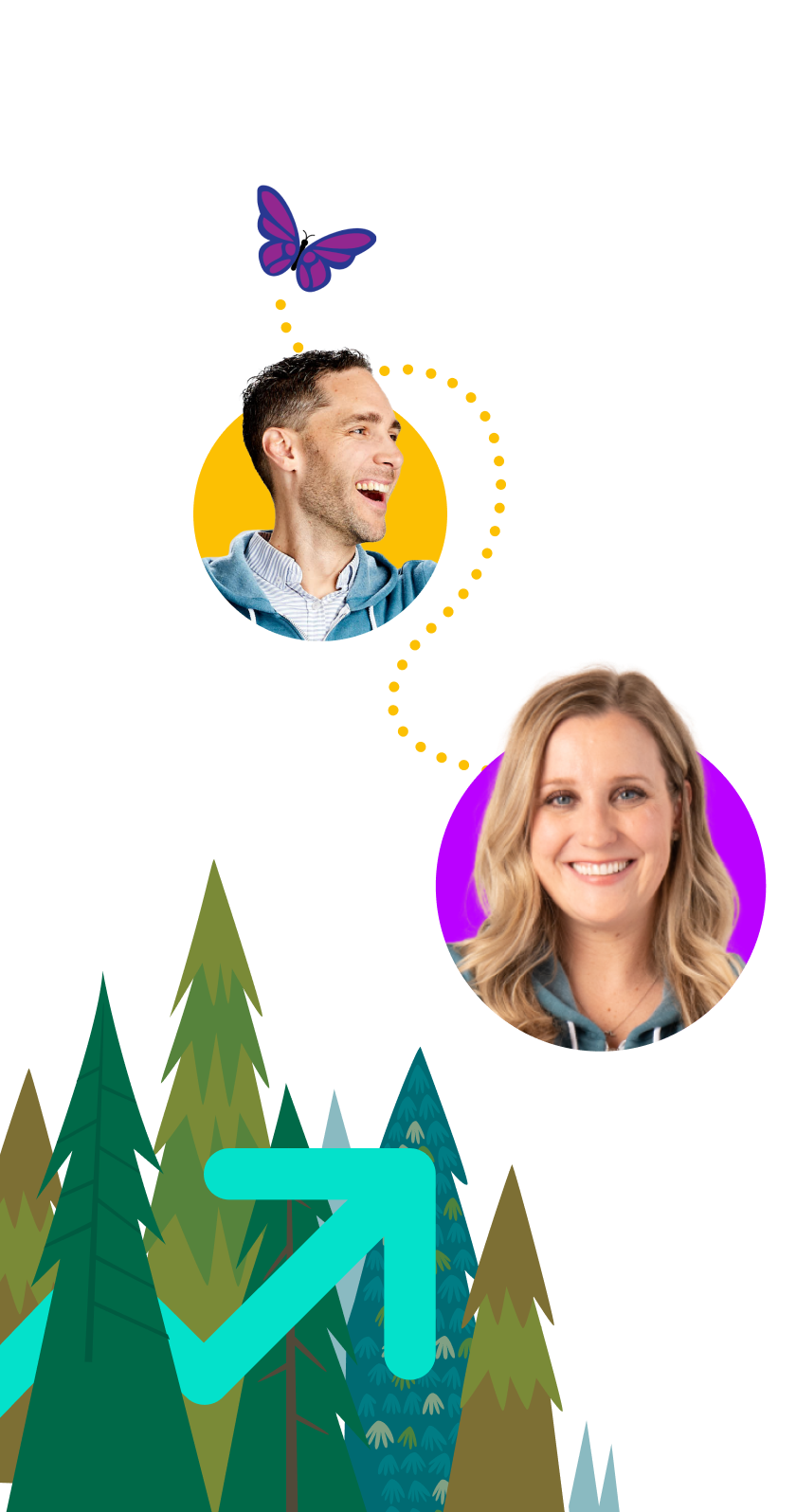People don’t buy things — they buy feelings. And while the world has become comfortable making purchases without any human interaction, the personal touch is more important than ever for making a successful sale.
Consumers often don’t consciously know why they make the purchases they do, and 95% of purchasing decisions are subconscious, according to Harvard professor Gerald Zaltman . This means that emotions drive consumers to pull out their credit cards, not a list of product features.
Tapping into how customers feel is the key to stellar sales and the basis of personal selling. (Think about the marketing of a full-service resort that elicits feelings of status and self-worth.) And making human connections are essential. Once you meet a prospect in person and develop a rapport, it becomes a relationship instead of a transaction.
Read on to learn everything you need to know about personal selling — and how to sell the sizzle instead of just the steak.
What you’ll learn:
- What is personal selling?
- Why personal selling is important
- Advantages of personal selling
- Disadvantages of personal selling
- The HEART framework: 5 steps for personal selling
- Personal selling skills
- Examples of personal selling
Level up your game with AI conversation insights
Sell smarter using Einstein Conversation Insights — with customer signals and next-step guidance to help you close.



What is personal selling?
Personal selling is selling directly to another person or to groups of people. It’s often used in industries where the products or services are complex and require detailed explanation. Personal selling requires a salesperson who understands everything about the products or services they’re selling — and who can build genuine trust and rapport with customers.
In personal selling, a sales rep will meet with potential customers and guide them through the sales process by uncovering their biggest challenges and providing solutions to solve their problems. This can take place in person, over the phone, or with video calls. During the meeting, the rep will also address any objectgions the prospect may have. If they’re successful, the rep will negotiate terms to close the deal.
Successful sellers need to make personal, emotional connections with prospects. A seller must have a deep understanding of the customer’s needs in order to influence them to make a purchase.
Why personal selling is important
Salespeople are often hyper-focused on one thing: closing the sale. This can happen pretty quickly when people click to buy something online, or when people go to an auditorium to watch a presentation. But personal selling requires a bit more time and care to finesse.
In sales, a lot of people try to build relationships using superficial things they have in common. For example, let’s say you’re in a place where a football game is on TV, and you say to the prospect, “Hey, I see you’re here to watch the game.”
Cheesy, right?
When you build relationships in personal selling, you are positioning yourself as someone of high value who can solve the prospect’s problems as a trusted advisor. That means you’re coming to the table prepared. You’re asking questions. You’re genuinely curious and looking to solve problems. That’s a much better business relationship than asking a prospect about a key fourth-quarter penalty.
Addressing problems and relating on a personal level is powerful. Now, the prospect trusts you both logically and emotionally. If you want a sticky business with minimal churn, the experience the client feels with you is a big part of the process. When you can carry that feeling all the way through, the client feels a personal connection. And over time, that personal touch will increase upsells and the lifetime value of the sales opportunity.
Advantages of personal selling
This type of selling brings a lot to the table. Here are a few of its advantages:
- Customization: Sales reps can tailor their approach to each individual customer, addressing their specific needs, preferences, and concerns. This kind of customized service is in demand: 71% of customers expect a personalized interaction from companies, and 76% get frustrated when one isn’t there, according to McKinsey
- Building relationships: With direct, one-on-one interactions, sales reps are in a better position to build strong relationships with customers. They won’t just remember your facts and figures; they’ll remember you. And these relationships can foster loyalty, repeat business, and positive word-of-mouth referrals.
- Immediate feedback: Sales reps can instantly gauge customer reactions, address objections, and adjust their sales pitches on the fly. This allows reps to tweak their sales strategies for better outcomes in the future.
- Demonstration and explanation: Live demonstrations can help customers better understand the benefits of the product or service being sold. The rep can also offer customers detailed explanations and answer questions in real time.
- Overcoming objections: Most customers hesitate before buying. And if their concerns aren’t addressed immediately, it may mean losing the sale. With personal selling, reps can address objections directly and have a better chance of closing the deal.
- Building trust: Credibility counts with customers. Reps who build trust with buyers are more likely to persuade them to make a purchase — especially with high-value products or services.
- Higher conversion rates: Personal selling often leads to higher conversion rates. And addressing customer concerns directly can significantly increase the likelihood of closing a sale.
Disadvantages of personal selling
While it offers many advantages, there are a few disadvantages. Some of these include:
- Time-consuming: Building relationships with individual customers and guiding them through the sales process takes time. Potentially, this can limit the number of customers that a sales representative reaches.
- Inconsistent results: Depending on the personality, communication style, and biases, the success of the sales rep may vary wildly. This may lead to inconsistencies in the sales process and customer experience.
- Limited availability: For products or services with low profit margins or mass-market appeal, personal selling may not be a great match because of the investment of time and human resources. Other sales channels, such as mass marketing, may be more efficient and cost effective.
The HEART framework: 5 steps for personal selling
In personal selling, one of the biggest roadblocks any seller faces is when a prospect hesitates to close the deal. But objections are actually an opportunity to show prospects that you and your product or service are worth the investment. Sales need a personal touch. And by following the HEART framework — hear, elaborate, acknowledge, re-clarify value, and transition to close — you are in a position to address any objections and save the sale.
An example of a typical stall objection might be a client saying, “Hey, this looks amazing. We love the program, and the pricing is right. But we want to delay the purchase by a month.”
Here’s how to systematically eliminate objections using the HEART framework:
- H: Actively listen to — or hear — the client’s objections.
- E: Ask the client to elaborate on the objection. “Can you help me understand what you mean specifically when you say you want to wait a month?” The client might explain that they’re wrapping up another program and that they have a lot on their plate. They suggest that once everything is done in a month, they may sign.
- A: Acknowledge the client’s concerns. Then, ask them if there are any other reasons for their reluctance. They might respond with, “No — not at all.”
- R: Ask them to re-clarify value. “Remind me again. What did you like most about the program based on what we discussed?” They’ll run through a list, saying, “I love this” and “this is great.” They’re basically selling themselves. You’re just verifying their beliefs.
- T: Then, transition to close. Tell the client, “Your biggest worry is that you want to wait a month so that you can wrap up this other program. But if it wasn’t for that program, you’d say, ‘Let’s go!’ Is that right?” The client agrees, so you continue, “What I’d be willing to do is give you access for a month at no extra cost. This way, your team can preview the program, you’ll get support — and it’ll save both you and me the time of having to hop on another call a month from now.”
Using the HEART framework, your client is more likely to say “yes” to the deal because you did your homework up front.
Join the Salesblazer movement
We’re building the largest and most successful community of sales professionals, so you can learn, connect, and grow.

Personal selling skills
As I said earlier, personal selling is all about building relationships and earning trust. Here are some of the fundamental sales skills you’ll need to succeed:
- Active listening: Ask your customer high-value questions and focus on what they tell you. The aim here is to understand their needs and offer tailored solutions.
- Product expertise: Know your product inside and out. You need to clearly understand the customer’s problems and how your product or service can resolve those issues.
- Trust-building: This requires frequent communication and follow-ups. If a customer isn’t satisfied with your product or service, you’ll need to come up with an alternative solution.
- Value focus: Understand how to demonstrate your product or service’s value to your customer. Even if it costs more than the competition’s, know how to make your case for why it’s worth a premium.
Examples of personal selling
Personal selling works in both business-to-business (B2B) and business-to-consumer (B2C) operations. Common examples include:
- Transactional selling: Typically has a very short sales cycle and requires quick decision-making. The prospect may not need much of a sales pitch. The buyer often enters the transaction ready to make their purchase. Think Black Friday sales during the holiday season.
- Consultative selling: Focuses on a deep understanding of customer needs and is more solution oriented. This type of sale requires more of a conversation. You’re asking the prospect questions to learn about their needs and finding a solution for their problem. An example of this would be when a customer goes to an appliance store to buy a stove.
- Strategic selling: This is the most complex type of personal selling, involving multiple stakeholders and a longer sales cycle. The process may involve other members of the team, all coordinating to close the sale. For example, a startup that offers a Enterprise SaaS platform needs a strategic selling approach.
- Solution selling: Zooms in on identifying the customer’s specific problems and offers comprehensive solutions. Sales reps work closely with customers to understand their pain points. Then, they present their product or service as the ideal solution. Door-to-door is an example of solution selling.
- Relationship selling: Prioritizes building strong, long-term relationships with customers based on trust, loyalty, and mutual respect. Salespeople focus on understanding the customer’s business and personal preferences, staying in regular contact, and providing ongoing support and assistance. An example of this would be a client who goes to the same hair salon every six months and has a chummy relationship with her stylist.
- Social selling: Leverages social media platforms to engage with prospects, build relationships, and drive sales. Salespeople use social media to share valuable content, engage with prospects and customers, and establish themselves as industry thought leaders. Think of LinkedIn Thought Leaders as an example.
- Cross-selling and upselling: Cross-selling involves recommending additional products or services that complement the customer’s original purchase, like the classic example of a waiter suggesting fries with a shake at a fast food restaurant. Upselling involves persuading the customer to upgrade to a higher-priced product or service, such as when a sales rep suggests buying wireless earbuds instead of wired headphones.
Prioritizing the human touch in sales
In a world increasingly dominated by virtual transactions, the importance of the human touch in sales is more vital than ever. Personal selling requires effort. But ultimately, you want to treat people how you want to be treated. The key to success in personal selling is thinking that way and using the platinum rule: You have to truly believe that your solution can sell a product. It’s about finding a good balance of emotional intelligence and working with your customer’s timeline.
Never miss another red flag in a sales call
See how Einstein Conversation Insights assists you in sales calls — with intel into what customers are saying.































